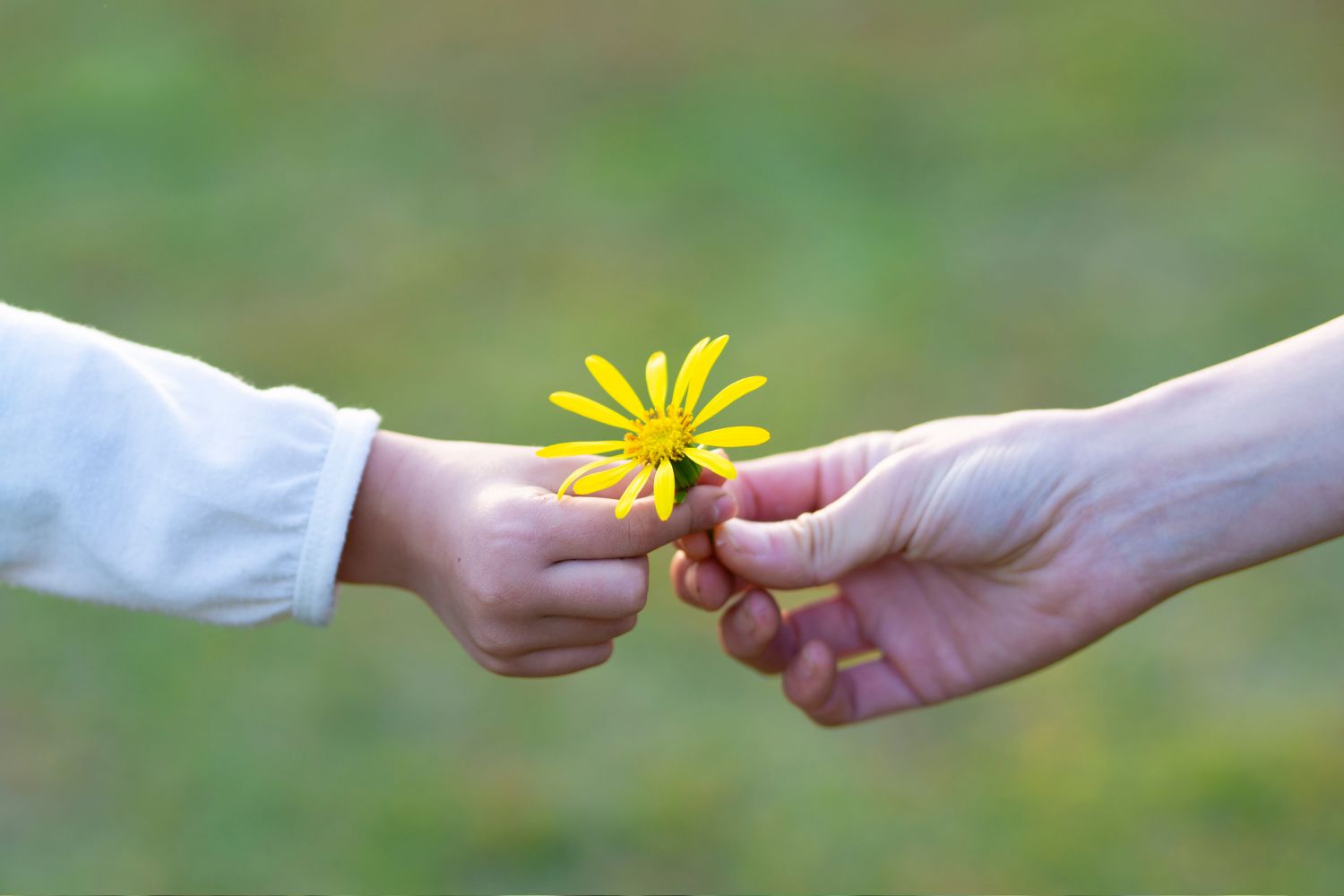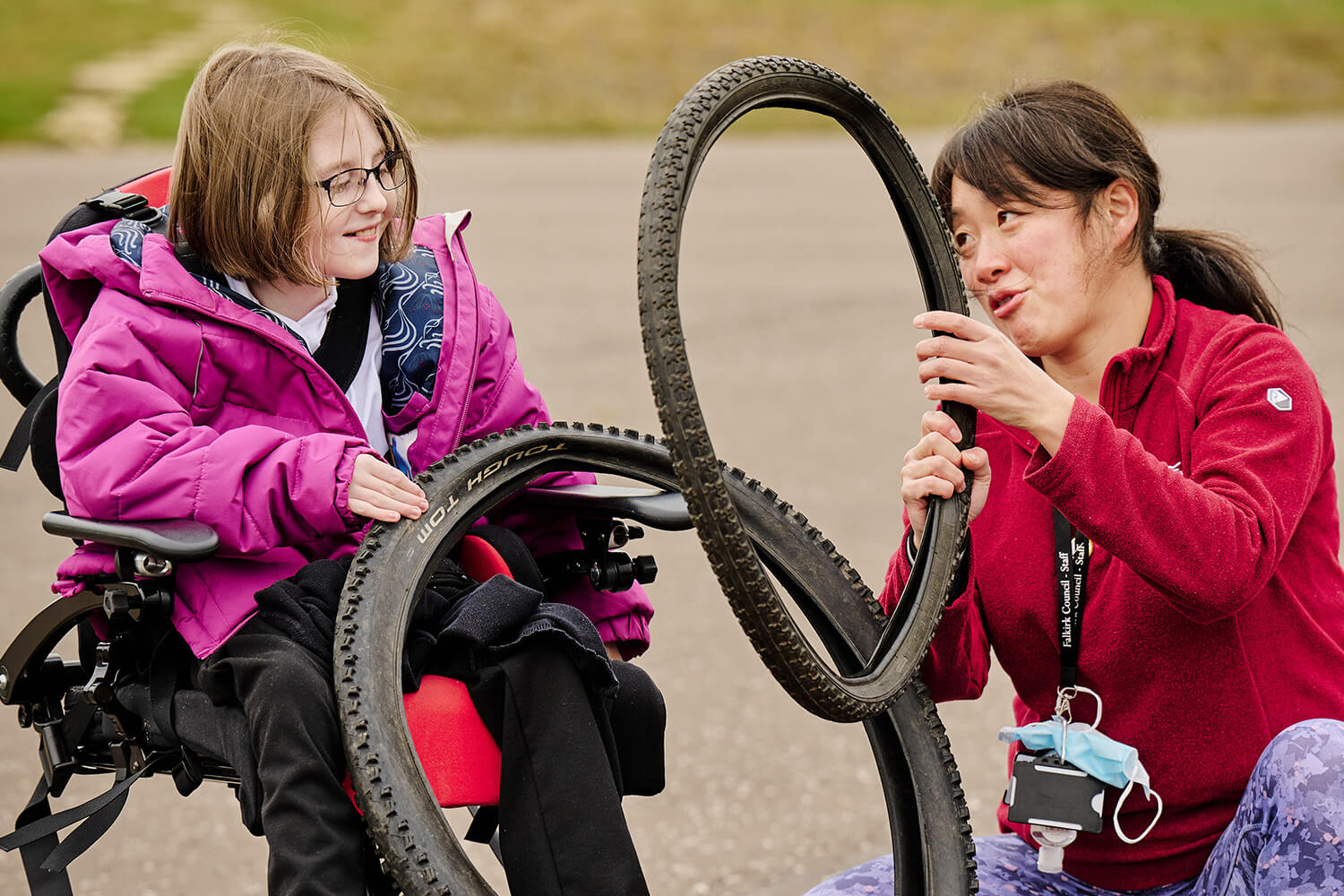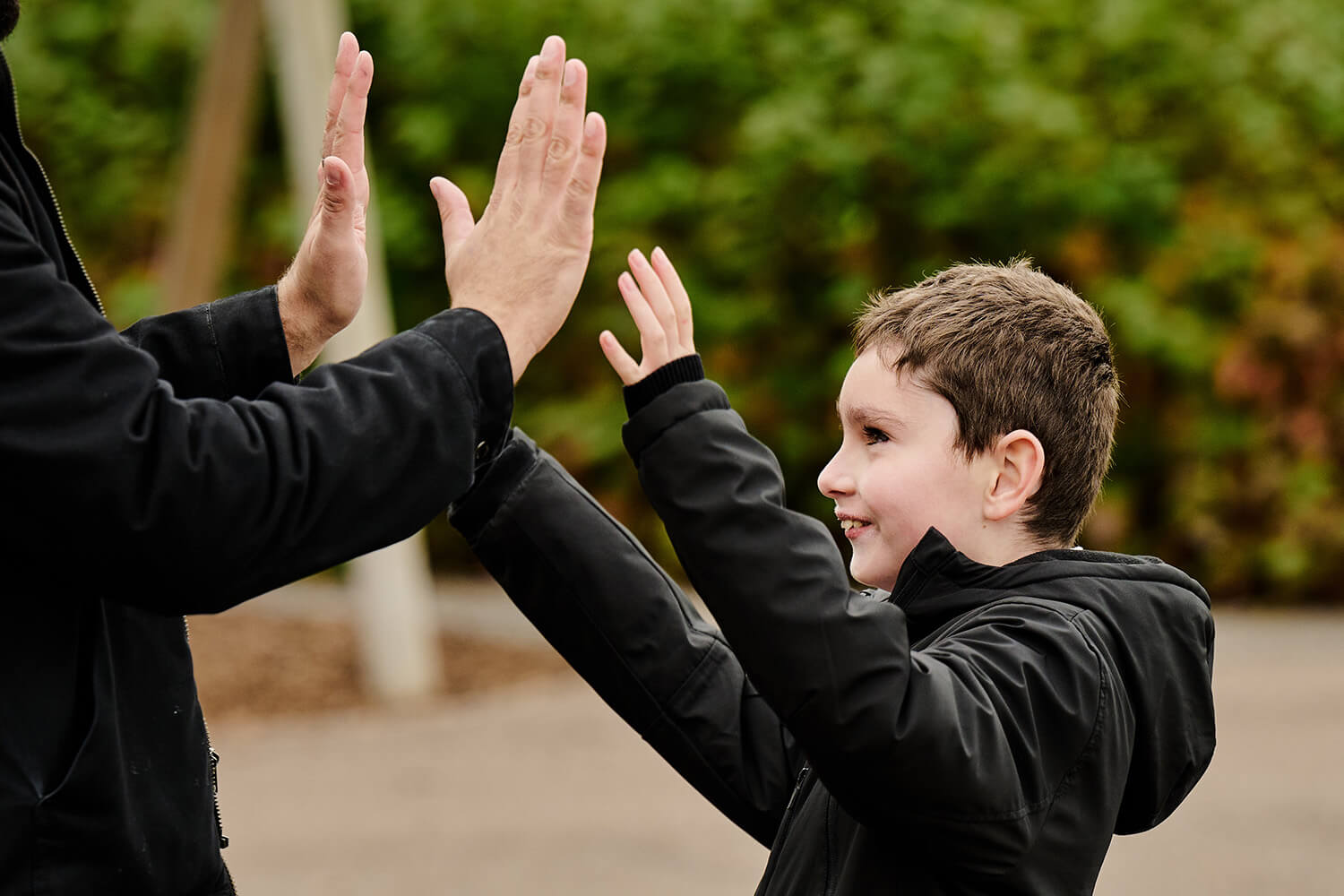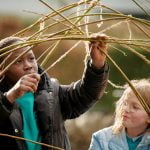The evidence that shows how outdoor learning and play support children’s mental health
This Mental Health Awareness Week, explore how outdoor learning and play can boost mental health and support meaningful connections at school.
In November 2023, the NHS released statistics showing the scale of the mental health crisis that children and young people are facing in the UK. It reported that 1 in 5 children and young people had a probable mental health disorder, and those experiencing mental health difficulties were less likely to report enjoyment of learning.
Mental Health Awareness Week is an annual event dedicated to raising awareness of mental health. This year’s theme, ‘community’, shines a light on the importance of meaningful social connections for mental health and wellbeing, so we wanted to explore how outdoor learning and play can support this. As our CEO, Carley Sefton, says:
We all know that spending regular time outdoors brings abundant benefits for the health and wellbeing of young people. As mental health challenges rise and pressures on young people increase, it becomes more and more vital that we harness these daily easy-to-achieve benefits.
Carley is right — we all know that time outdoors is good for us. However, we also know that one of the barriers to outdoor learning is a concern about evidencing its value. That’s why, this Mental Health Awareness Week, we want to take a closer look at the evidence that shows how outdoor learning and play support children’s mental health.
The Five Ways to Wellbeing
In 2008, the New Economics Foundation established a set of evidence-based messages aimed at improving the mental health and wellbeing of the whole population. The ‘Five Ways to Wellbeing’ have stood the test of time, and are still used by the NHS and many other mental health organisations to promote wellbeing at both an individual and a collective level.
Importantly for schools, the ‘Five Ways to Wellbeing’ are easily achieved through outdoor learning and play, improving mental health and wellbeing on a whole school level. Indeed, when telling us why they choose to teach outdoors, many educators cited the mental health and wellbeing benefits for both pupils and staff. So, what are the ‘Five Ways to Wellbeing’?
1. Connect
Healthy relationships with family, friends, and others support our mental health and wellbeing. School grounds are an invaluable space where everyone can get together to connect, socialise, learn, and play together — we’ll come back to this in a moment!
2. Be active
Being active is beneficial for mental health and wellbeing, as well as physical health and fitness. However, physical activity isn’t only reserved for P.E. lessons! High quality play provides children and young people the chance to experience risk and challenge in a familiar setting, helping to develop the skills they need to manage uncertainty.
3. Take notice
Sometimes called ‘mindfulness’, taking notice of the present moment helps with managing feelings and emotions. However, while mindfulness requires purposeful practice to produce mental health benefits (and therefore doesn’t always engage children and young people), taking notice of the present moment is effortless in the outdoor classroom.
Being in nature encourages us to be curious, observe the beauty all around us, and notice the changing of the seasons. By encouraging these experiences through activities like Forest Bathing, we can help children to appreciate what matters.
4. Keep learning
Trying new hobbies and developing new skills builds self-esteem and broadens horizons. This is especially important for children and young people who struggle in a traditional classroom environment. Our projects like ‘This Place is like a Building Site!’ show that — for those with different learning styles — the real-life, hands-on, experiential learning that takes place in the outdoor classroom is a vital chance to shine.
5. Give
Acts of kindness offer clear benefits for mental health and wellbeing — and that includes acts of kindness towards the natural world around us. Nature connection is the first and most important step in equipping children and young people with the tools they need to take climate action and protect the environment. Whether through creating climate-ready school grounds or boosting biodiversity in the local area, we need to help children and young people develop nature connection at school — for their sake and ours.
How outdoor learning and play support meaningful connections
Now, let’s take a closer look at how outdoor learning and play can support meaningful connections at school.
In 2022, researchers published a comprehensive review of the socio-emotional and academic benefits of outdoor learning in educational settings. Of their findings, Dr Jeff Mann said:
We have known for some time the value of natural environments for students’ socio-emotional and intellectual development. This international systematic review of almost 150 studies represents a landmark milestone in outdoor learning research, and suggests that nature-specific outdoor learning has measurable socio-emotional, academic and wellbeing benefits.
Studies on curricular lessons specifically noted significant improvements to student wellbeing, motivation, engagement, social and interpersonal skills, and self-confidence. For example, one study found that children participating in a biodiversity-focussed outdoor learning program experienced significant and sustained improvements to their wellbeing and nature connection over the course of an academic year. However, children who didn’t participate in the program did not experience any improvements to their wellbeing.
So, there is clear evidence that outdoor learning supports children’s socio-emotional development, academic learning outcomes, and wellbeing. But how does that translate into making meaningful connections? To find out, you only need look to the children, young people, and educators involved with our projects.
Better Breaktimes, Better Transitions aimed to improve pupil wellbeing by easing the transition from primary to secondary school through play. After participating in the project, one pupil said:
It was a good experience because some of the people that were doing it with me, I didn’t know. So, I’ve made new friends and learned communication skills and how to have fun with other people.
Similarly, a senior leader who participated in the pilot of our My School My Planet project said:
What we saw was that [the pupils] eventually were choosing to work with children who weren’t their friends, who were children that were not known to them. And we saw new friendships being formed, which was really lovely.
It isn’t just pupils’ relationships with peers which improve in the outdoor classroom either. When we asked educators why they choose to teach outdoors, many responses pointed to the importance of the outdoor classroom for building relationships with pupils. As one secondary school teacher put it:
I’m able to build different relationships with the students through the different venue, challenges, and activities. In turn, students see staff in a different light — we’re not just formal teachers of curricular subjects outdoors.
How to use the outdoors to support mental health and wellbeing at school
The evidence is clear: outdoor learning and play offers key benefits for mental health and wellbeing — and across the board. Dr Mann and colleagues recommend that outdoor learning is ‘incorporated into formal curricula and education budgeting’ to become a part of ‘every child’s school experience’, and we couldn’t agree more! However, we know that outdoor learning can seem daunting at first.
For advice on getting started in the outdoor classroom, discover our top tips for newcomers to outdoor learning, or visit our school stage hubs for early years, primary, and secondary where you will find everything you need for outdoor learning in your setting.
Explore the Mental Health Awareness Week resources for schools for various packs, including assemblies and lesson ideas to help you to support mental health at school. Alternatively, learn more about how schools can use the outdoors to support children’s mental health, or browse our free outdoor lesson ideas to find activities which can support health and wellbeing in the outdoor classroom.
If you’d like to stay up to date with the latest news about outdoor learning and play, don’t forget to sign up to our newsletter!












